AG: Referring to the ‘40’s, really!
RDL: Right, back, it goes right back, but it certainly…My main reaction when I first glanced at this.. (this was the first poem of Allen Ginsberg’s that I’d come across, although he had written, I discovered, retrospectively, quite a number of things before this) ..my main reaction was, a tremendous sense of consolation, and gratitude for that consolation. (RDL reads opening lines of “Howl”) ..And so with a tremendous momentum this goes on, without losing for a moment the pace, the passion and the compassion.
Since then, this book, which is the occasion of this.. pretext of this.. meeting , Allen Ginsberg”s Collected Poems from 1947 to 1980. This is your first Collected?..actual..of Collected Poems…
AG: Yes, first big book.
RDL: As everybody in the poetry and literary world knows, a volume like this of Collected Poems is a real test of a poet’s stamina and resilience and creativity through the years, and I think one of the most delightful things to be found here to be found here is that there’s not the slightest indication of any abatement of the overflowing of the poetic genius (the last poems are poems of great maturity and accomplishment).
I think that’s all I’m going to say about Allen Ginsberg to start with.
AG (Well it feels pretty good.) (But) Imagine sitting there being a world historic figure and listening to Dr.Laing, whom I’ve known a long time, before, I always thought was older, as I said, out of a sense of some kind of sacred respect. So, imagine the pleasure of hearing such generous and accurate and knowing (that’s the interesting thing) knowing description or perception that tallies with my own meglomaniac fantasy (my own common-sense actually, and his common-sense. That’s actually an extraordinary sense of what the first thing that he said..what he got out of my poem originally (which I’ve heard from other people too) (which) is of interest to me, the sense of affirmation? or re-affirmation? What was it?
RDL: Consolation..
AG: Consolation!
RDL ..and gratitude (that such a rare constellation could be..experienced)
AG: Yeah..So that’s the same.. I’m getting back.. as a sort of karmic pay-back, from Ronnie Laing, and, rather than negate it, or, out of false pride, say no, I would like to re-affirm it, and accept it, and thank you, and thank you also for tolerating such intimacy, because that’s the one element, I would say, that has been lacking in our community, or our society, some common-sense awareness of each others sacred intelligence, or some common-sense recognition or acknowledgment of the emotions of the sacred world that we inhabit together, and of the delicacy and the sensitivity that we all bear, which is what I’m.. what I have been trying to acknowledge and manifest and proclaim in the poetry, and which I don’t often enough find recognized as the basis, and so I am very moved by Ronnie Laing’s intelligence and sympathy. So, in sum, it feels fine (and should!)
RDL’ There’s a.. there’s a.. I don’t know who wrote that line but there ‘s a.. - I know this one isn’t yours (and its not mine) - “I’ve roamed the whole world over and many a place besides”..
AG; uh-huh., that’s a little ballad
RDL: ...which could be a motto for a part of your existence, strangely enough, of people of our time, you must have been, in all senses, in both spiritual and in terms of altered states, as well as ordinary states, “of numb bliss once”. “bliss numbed by ice-cold knowledge”.. As well as being a world traveler, and within all that, I know that you’ve had a.. with your own sensibility, and sensitivity, had a.. a great struggle. to keep your own balance, and I know that you’ve, for many years, if not since before you were born, anyway, cultivated meditation.
AG: But you’ve been involved in meditative practice also. How long? I was really amazed when you got into that and was interested in that .We never did get a chance to talk about that much Last time we met was 1978-79, when I was here (and) we were at a party together.
So you went to India, finally, or Ceylon?
RDL: Yeah, Well I went to both places, I mainly cultivated mindfulness.
AG: Vipassana
RDL: Vipassana
AG:Who was your teacher?
AG: Yeah, I’ve read that text. Trungpa, Chogyam Trungpa, my teacher, used that as a sort of basic text.
RDL: Fundamental. How is Trungpa?
AG: Well we have a funny karma together on that because my guru, to be frank about it or straightforward about it, or meditation-teacher, and also poetry-teacher (I’ve learnt a lot about poetry from him).
RDL: I read your introduction to his poems.
AG: Did you like the poems?
RDL: Oh I thought that they were amazing.
AG; He’s very smart. So there’s a book called First Thought, Best Thought by Chogyam Trungpa Rinpoche, who’s a Tibetan lama, who went to study at Oxford in aesthetics that I wrote a little introduction for (he’s my teacher). And there’s a little karmic cycle involved there, because, when Trungpa left Oxford, he started a meditation center in the North, Samyé Ling – and, totally despairing of the possibility of bringing some kind of delicate sensibility to the West, he started drinking, and took off his robes, and one day in a fit of abandon smashed his automobile into the window of.. a joke shop, you remember?
RDL: Oh yes, I remember it very well. He was driving from Carlisle, across the Pennines, over to Newcastle, and he came to a fork in the road, where he could either turn left or turn right, but he went right on into a joke shop – and seriously damaged himself, I mean, it was no joke!
AG: Well..he still limps. With (William) Burroughs I went to see Trungpa one time, and said, “Why haven’t you done more exercise to get your arm and your leg back in shape?”
RDL: He had a complete..
AG: Paralysis
RDL: ..down the left-hand side of his body
AG: He said the reason was that he was perhaps too energetic, and this way he would be sort of held down, tied down, so people would have to come and see him (instead of) him running around and exhausting himself), So, because there was a state of depression, I think, the Rinpoche, or lama, Trungpa, invited the services of an alienist (sic), who was Mr Laing...
But how many here have had some experience with meditation practice? And how many here have not? Well, that’s the majority. Why don’t we try a little experiment before we go on… and have maybe a minute of sitting, with some very simple instruction. What would be the simplest instruction? Just sit?
RDL: I’ll leave that to (you). It’s your occasion..
AG: Was that an agreeable thing? (It”ll) take us about four minutes, from beginning, middle and end of the whole thing, so that everybody here will know what we’ve been talking about a bit, or have a taste of it, and also, why not? – it’s sort of a bodhidsattvic proposition! – So, I guess, if those of you..I don’t know what kinds of chairs you’re in, but maybe you could sit with your spines straight.. maybe towards the front of the chair, the edge of the chair, feet on the ground to give you a little support. The position that Trungpa has been using was hands on the knees, "restful mind mudra". Main thing is spine straight, and the reason for a straight spine is so that you can relax your stomach (and maybe relax the belt, if there is any constriction), so you can breathe, without obstruction, so that there’s no constraint in the actual breathing. And, I guess, no particular instruction here, except maybe pay attention to your breath, localize your attention to your breath very simply, and then if you find your mind wandering, that’s alright, ”take a friendly attitude towards your thoughts”, and, as you acknowledge that your mind is wandering, and are aware of it, bring your attention back to the breath. And we’ll do that for maybe one minute, and I’ll ring a bell - what else?
RDL: And after that, we’ll move straight into…When are we supposed to be out of here. Ten past two, I was told, is that right?
AG: So the basic thing is, pay attention to where you are in the space around you - oh, eyes, say, resting in space, rather than fixed on trying to bring in an image into play, just resting in the external optical field, maybe with some slight awareness of the periphery of the optical field – ok?
(Allen then conducts a one-minute silent meditation)
AG: Well, that was a nice thing to do, Why not?
RDL: If you can get away with it
AG: You can get away with it. Yeah, you can get away with it. Why not? So there are a couple of things that might be appropriate. There’s one thing, a song that I’ve written with instructions for meditation in rock n roll form, so perhaps Steven Taylor and I could sing that. And then I’ll read that poem “Mind Breaths”, and then, if we have time, there are a couple of poems that I wrote recently and have not been published, and (have) read rarely, of dream poems, involving my mother, as an epilogue to "Kaddish", and a series of poems that I had in sort of visionary dreams, that I was able to remember, encounters with William Carlos Williams, my father and mother and other people, Kerouac, visiting the dead in China (where I was), so I’d like you to hear those.
(Allen then sets up alongside Steven Taylor)
AG: So this is. We haven’t done a sound-check before. so well..I didn’t know the conversation would go this way. So,, that’s good enough? Won’t overload? - Actually I left my reading glasses in my bag, the little Indian-Chinese bag ,the little Chinese bag there – the little black and red Chinese bag. I’m getting older and forgetful!
RDL: “I fear young man, you’re growing old”
AG: Yes
RDL: “Is that wise?”
AG: “Not exactly, sir, but it’s doing something to dim my eyes”
(Allen then performs (with Steven Taylor) “Do The Meditation Rock"
AG: The poem Dr Laing referred to is called “Mind Breaths”, which was the title poem of a book which was…Trungpa’s comment on that , incidentally - I read it to him on a plane, travelling to.. about a week or so after I’d written it - he said, “well, the trouble with most people writing about meditation, trying to follow their minds, (is) it’s a lot of shit - or, bullshit. He liked this because it seemed accurate. So I’ll read that. It’s 1973. The situation was that I was at a seminary, where there was a teaching, and there was apparatus like this up on the..the teacher, Trungpa, had a microphone. It was in a Teton Village, in front of a Teton mountain-range, in an old ski-resort that was to-let in the off-season, and which we had taken over and made into a meditation-hall shrine-room, so there were plate-glass windows facing the mountain...
(Allen reads “Mind Breaths”)
AG: Now I wanted to get on with the poems that were dreams about members of my family – and preface that with a song “Father Death Blues” (I wrote this when I had heard that my father had died. I was teaching out in Boulder at NAROPA, so flew home for the funeral).
(Allen sings "Father Death Blues" – with Steven Taylor)
AG: So, from October, a year ago, “White Shroud” – an epilogue to a longer poem called “Kaddish”, written thirty years earlier.. This, and one brief poem, and then we’ll conclude. "White Shroud", I think the tradition, Hebrew tradition, is that Jews are buried in a white shroud (for those of you not familiar, the poem "Kaddish" was an elegy for my mother who had died in Pilgrim State Hospital in 1956, a Long Island medical hospital, in America...)
(Allen reads "White Shroud")
AG: We’ll do one brief poem. Another dream, in Baoding, China, late November 1984. I encounter William Carlos Williams. We discuss poetics (and) I wrote a poem and woke (up) and transcribed it. So the title is “Written in My Dream by W.C.Williams"
(Allen reads "Written in My Dream by W.C.Williams")
AG (following a prompt by ST): And maybe finish with Blake – "The Nurses Song" by William Blake - which is a sing-along. And the last line is “All the hills echoed”.
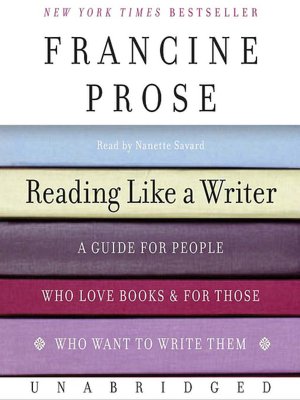 Reading and writing are inextricably intertwined, and literature — like all cultural creation — is an endless labyrinth of influence. And while some have argued that writing well can be taught, our cultural narrative continues to perpetuate the myth of “God”-given, inborn talent, or what Charles Eames has termed “the ‘gifted few’ concept”.
Reading and writing are inextricably intertwined, and literature — like all cultural creation — is an endless labyrinth of influence. And while some have argued that writing well can be taught, our cultural narrative continues to perpetuate the myth of “God”-given, inborn talent, or what Charles Eames has termed “the ‘gifted few’ concept”.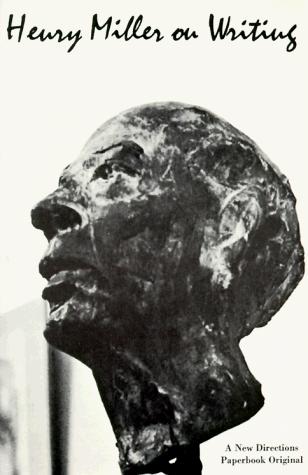
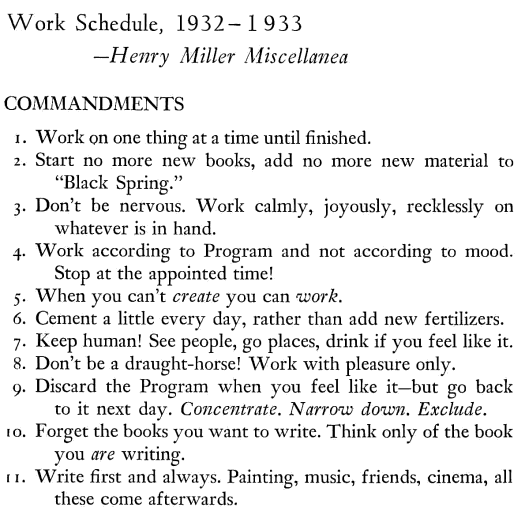
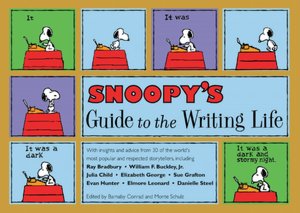
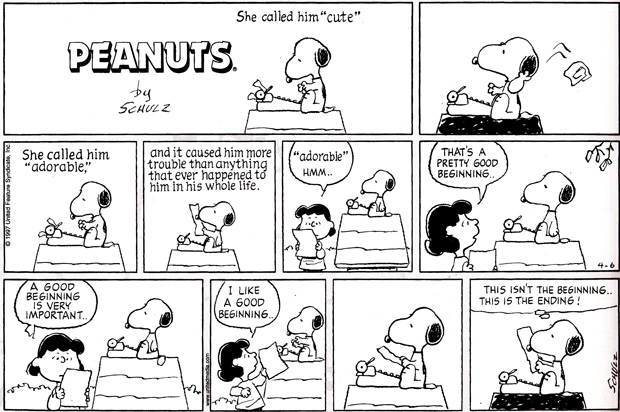

 In a
In a 






